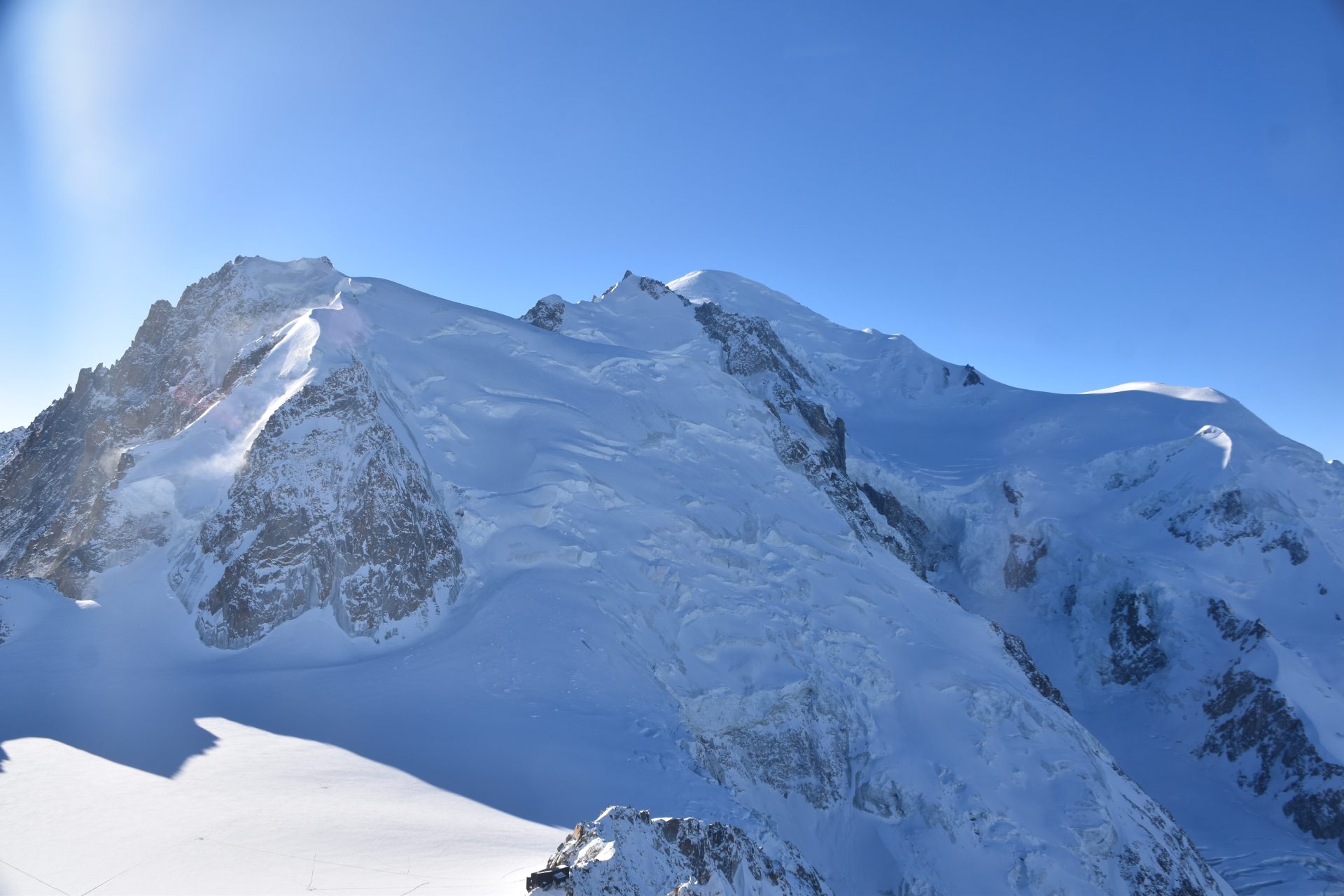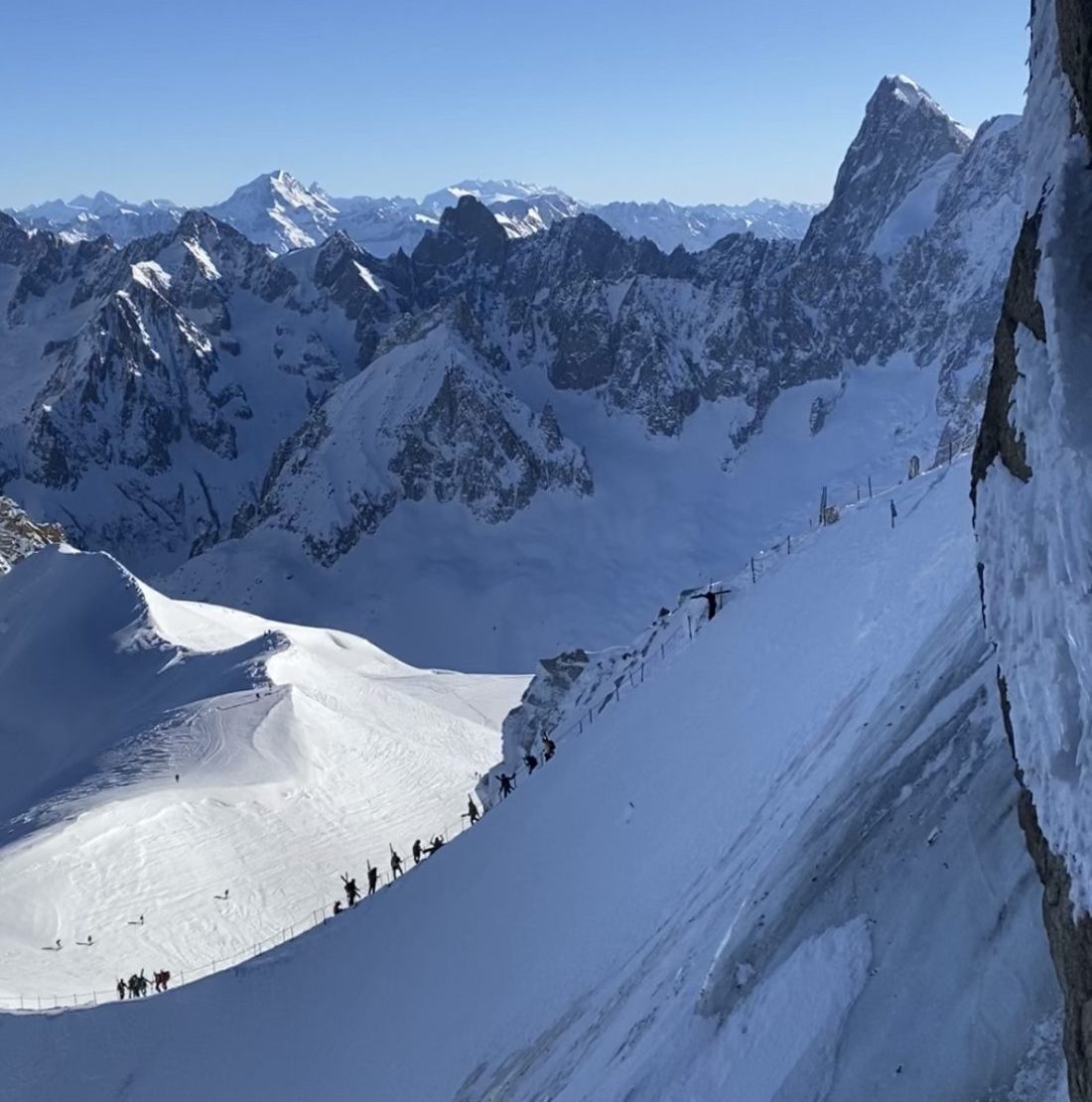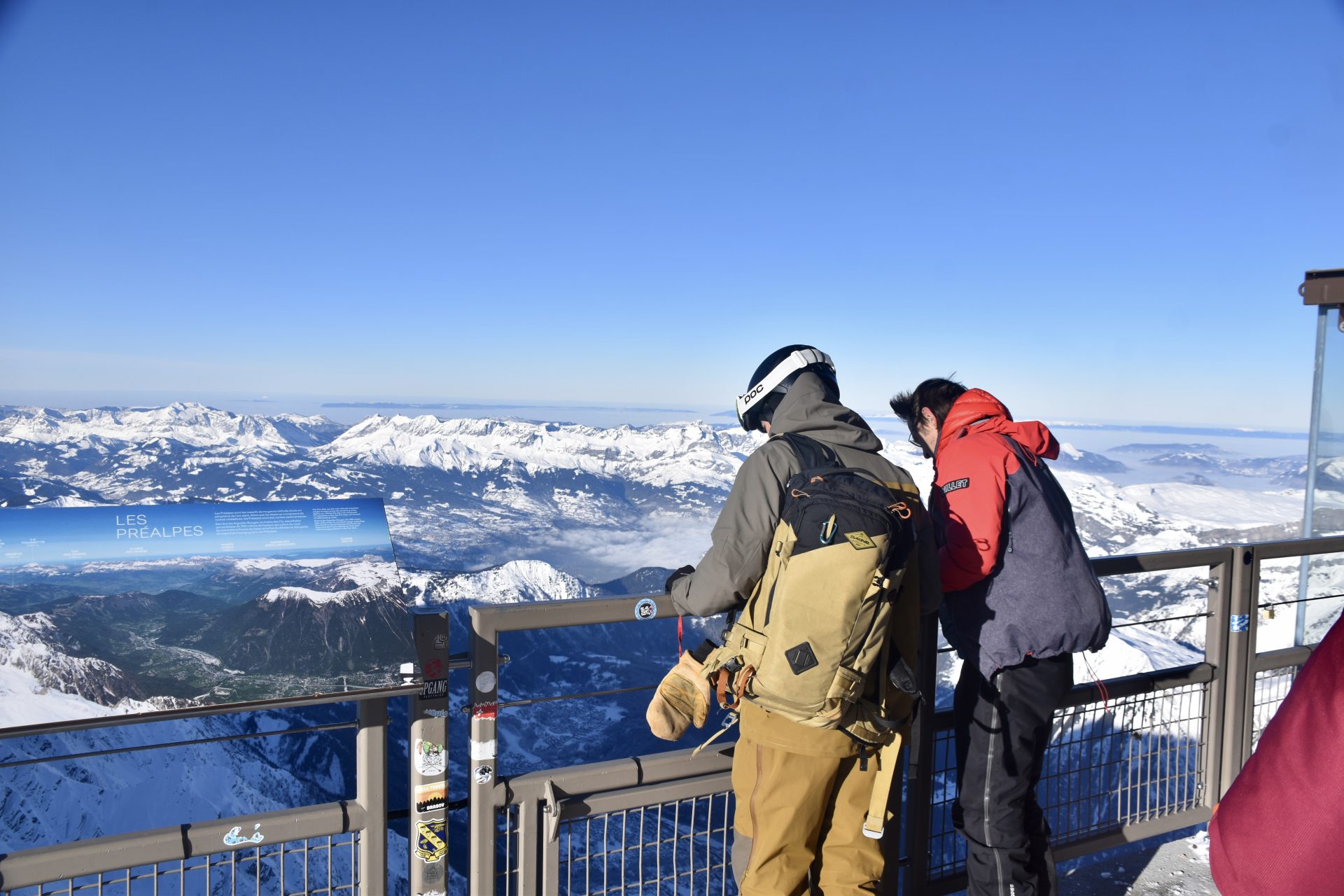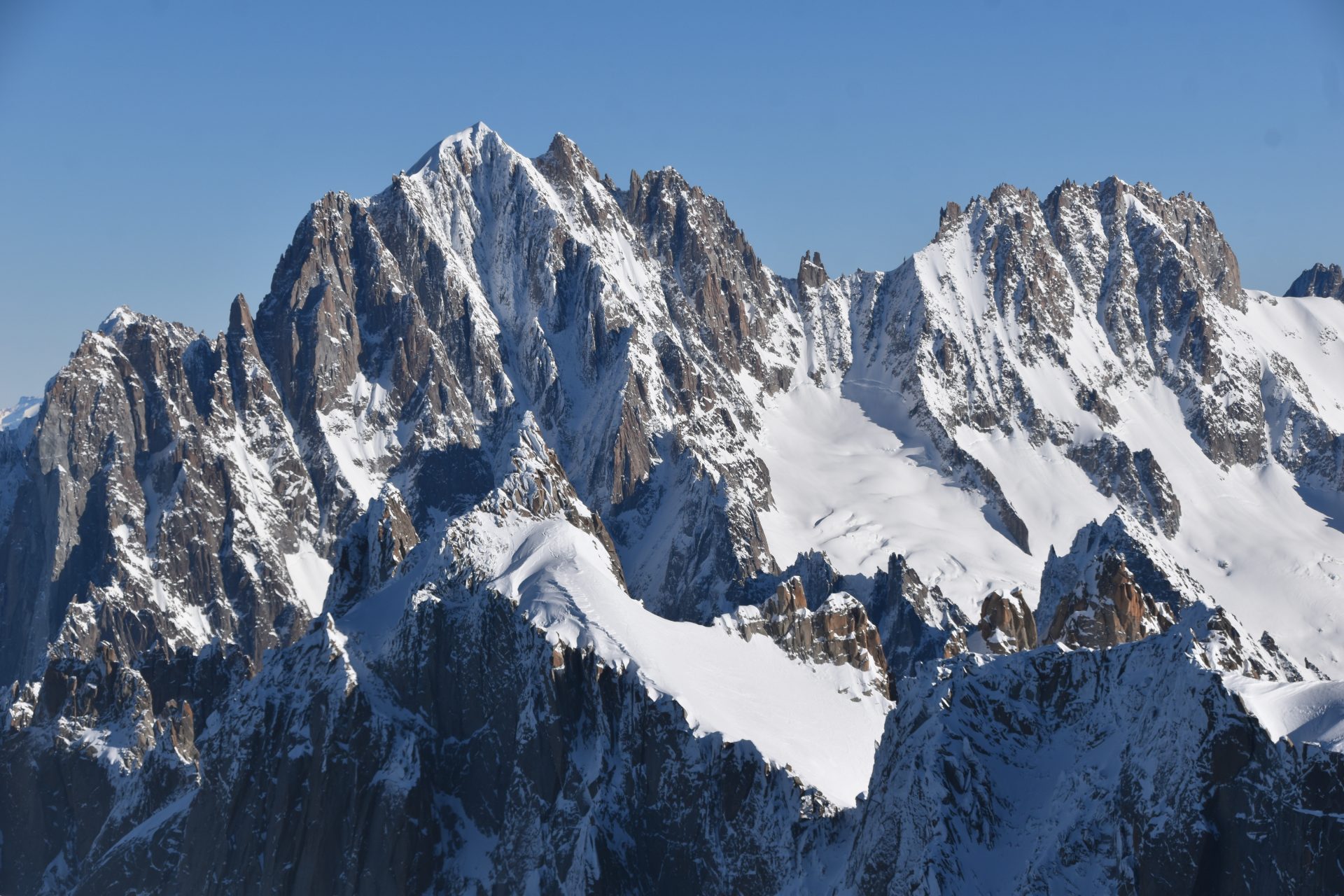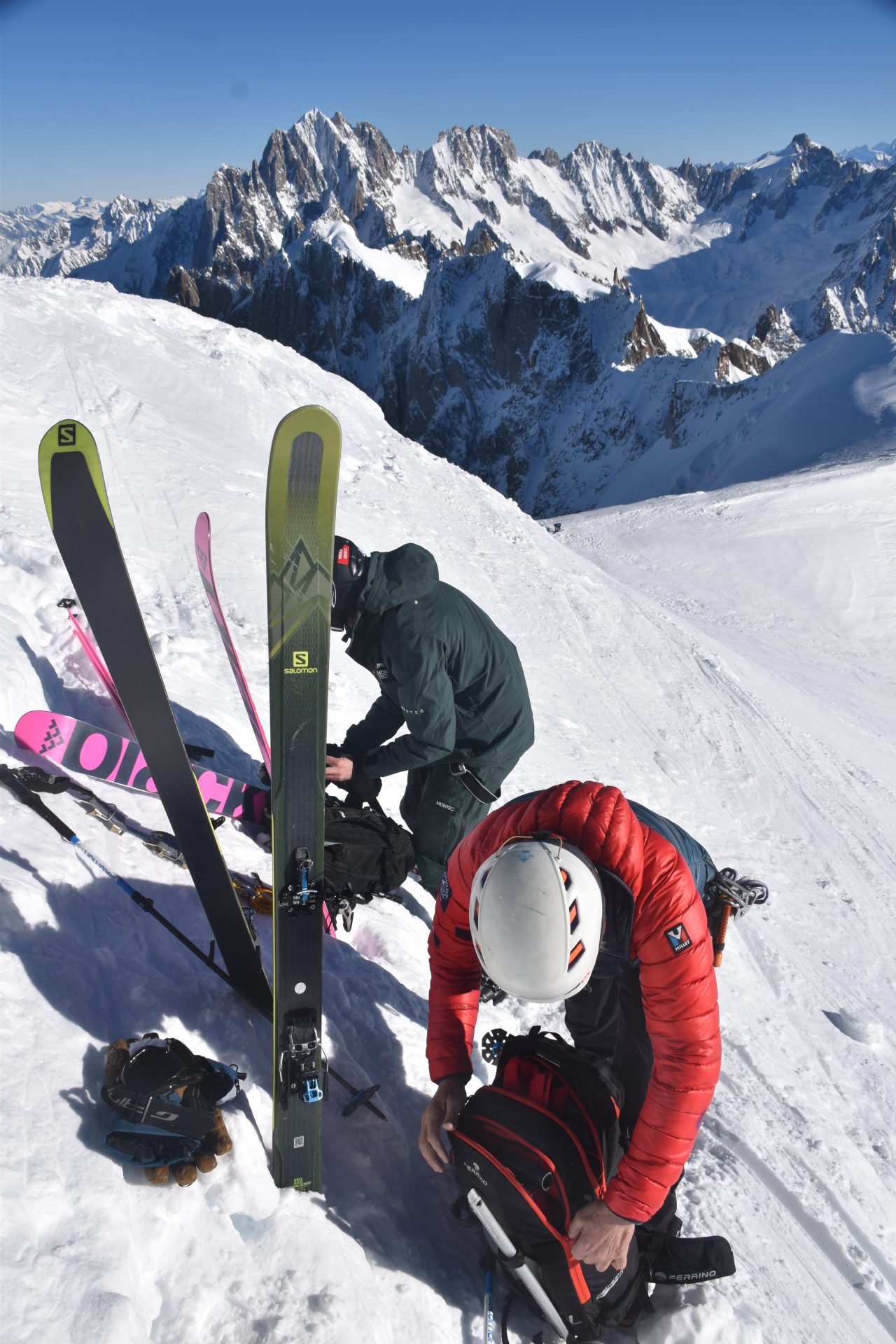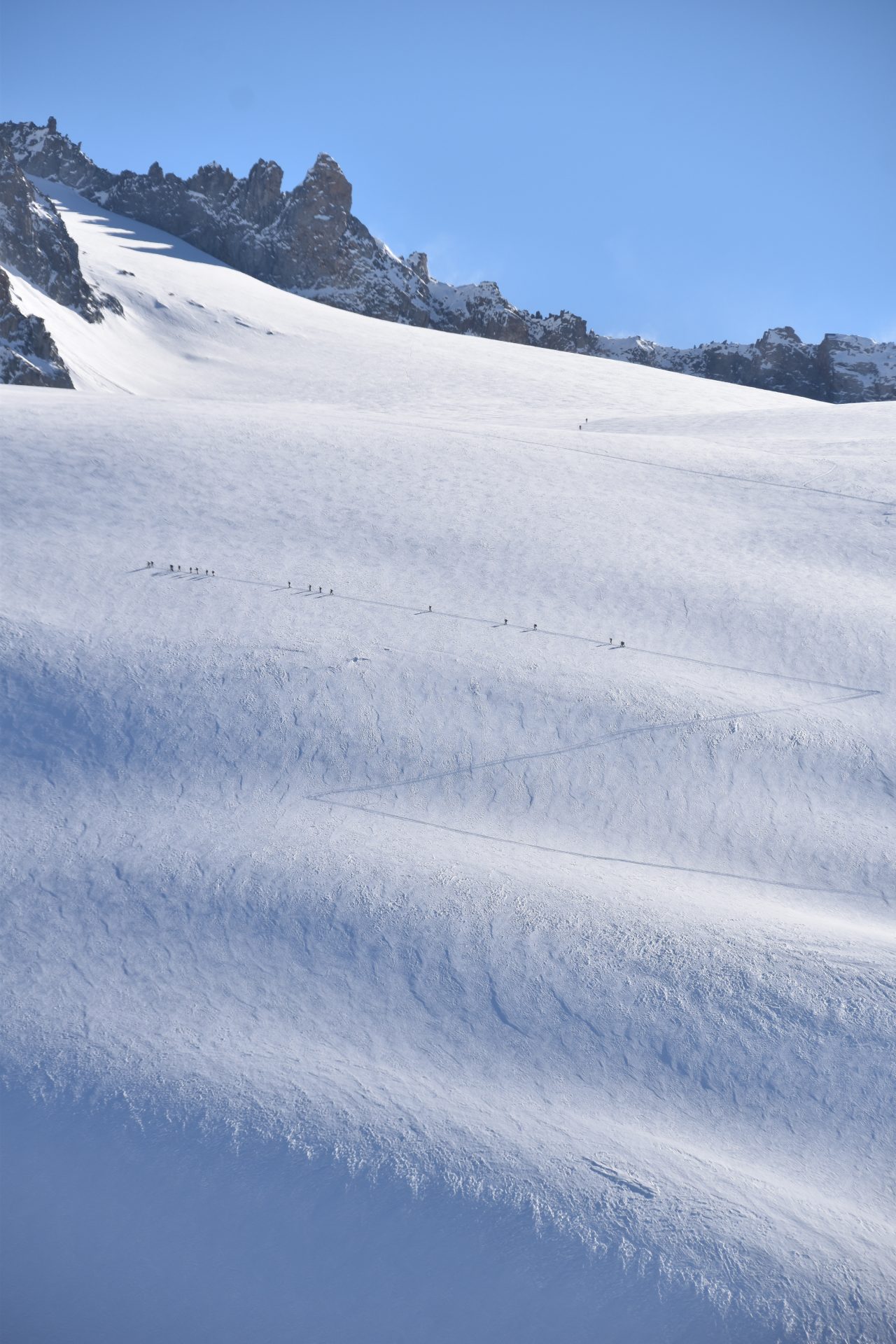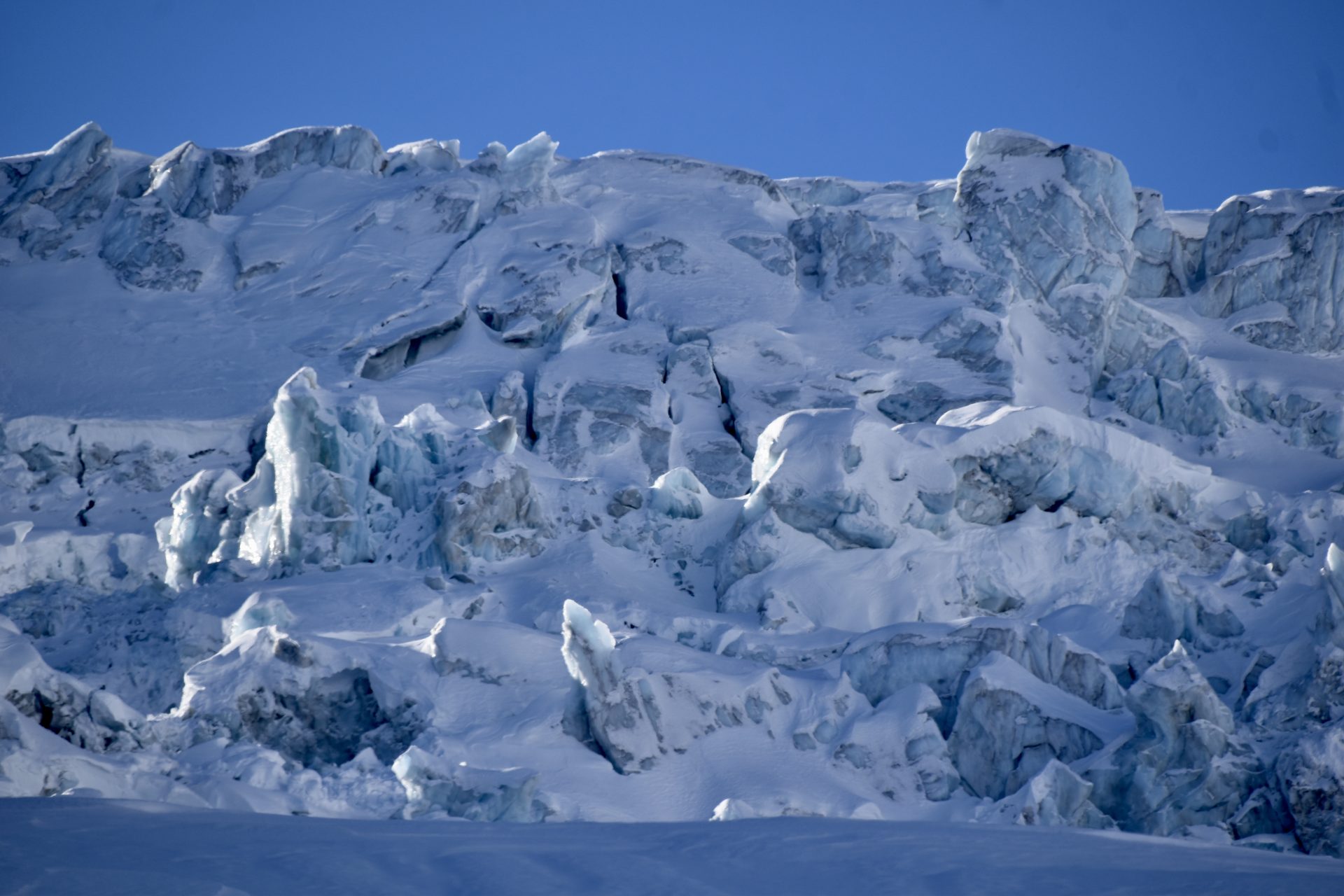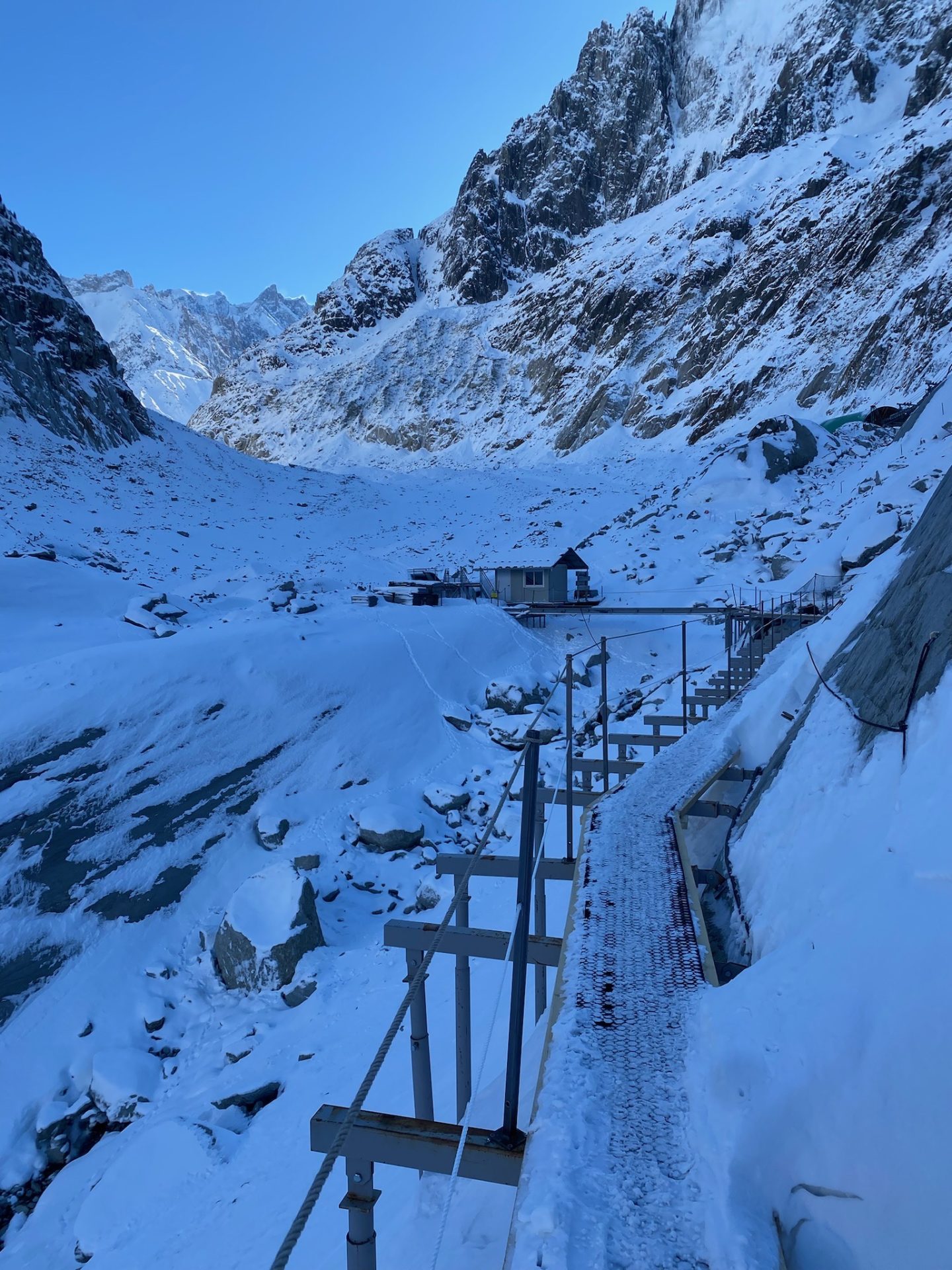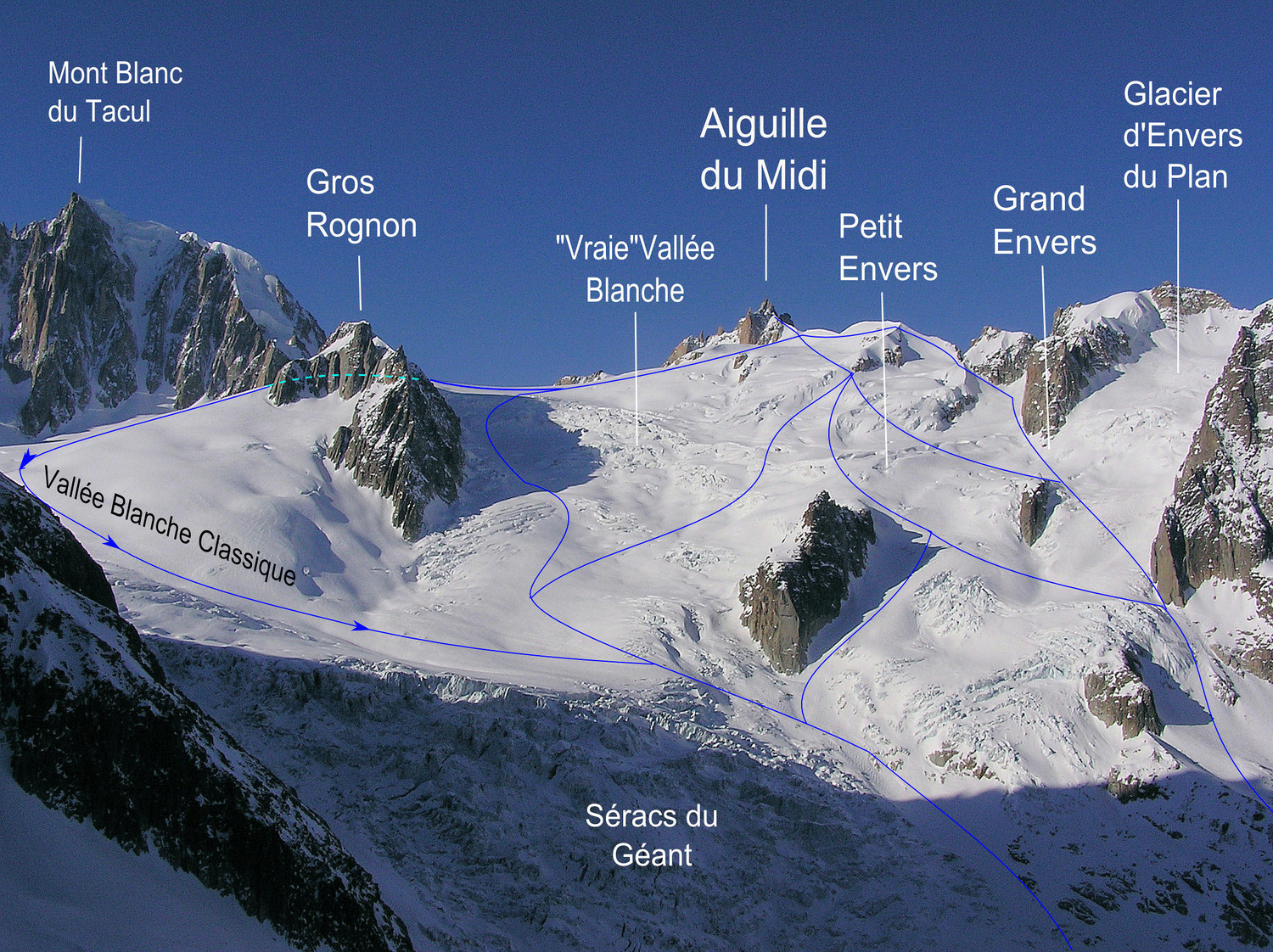
Report from January 13, 2024
La Vallée Blanche
La Vallée Blanche is arguably the most famous off-piste ski run in the world. Starting atop the Aiguille du Midi, average people take 4-6 hours to ski the 22 km (13.5 mile) glacier run with a 9,000-foot descent.
If you have any questions or have never skied it, it is necessary to hire a guide.
There are a few different routes and depending on the conditions and your ability, your guide will choose the best one.
It is imperative to be a strong skier and confident skiing moguls/powder. This is not something to mess around with. Glacier danger is foreign to most skiers but very real. The risk of falling into hidden crevasses, avalanches and icefalls are high.
Skiing
We checked the forecast and saw only sun for the next few days. Online, most guides were fully booked. But it’s simple to walk into the guiding office in town which is open until 7PM and request a guide for the next day. There are no same day guide bookings so you must plan in advance.
We heard a sunny day in January was perfect since the crowds were low. In the spring over 2000 people per day ski the glacier.
Our guide was Thierry Renault, a local mountain guide who has done many first ascents in the Chamonix area.
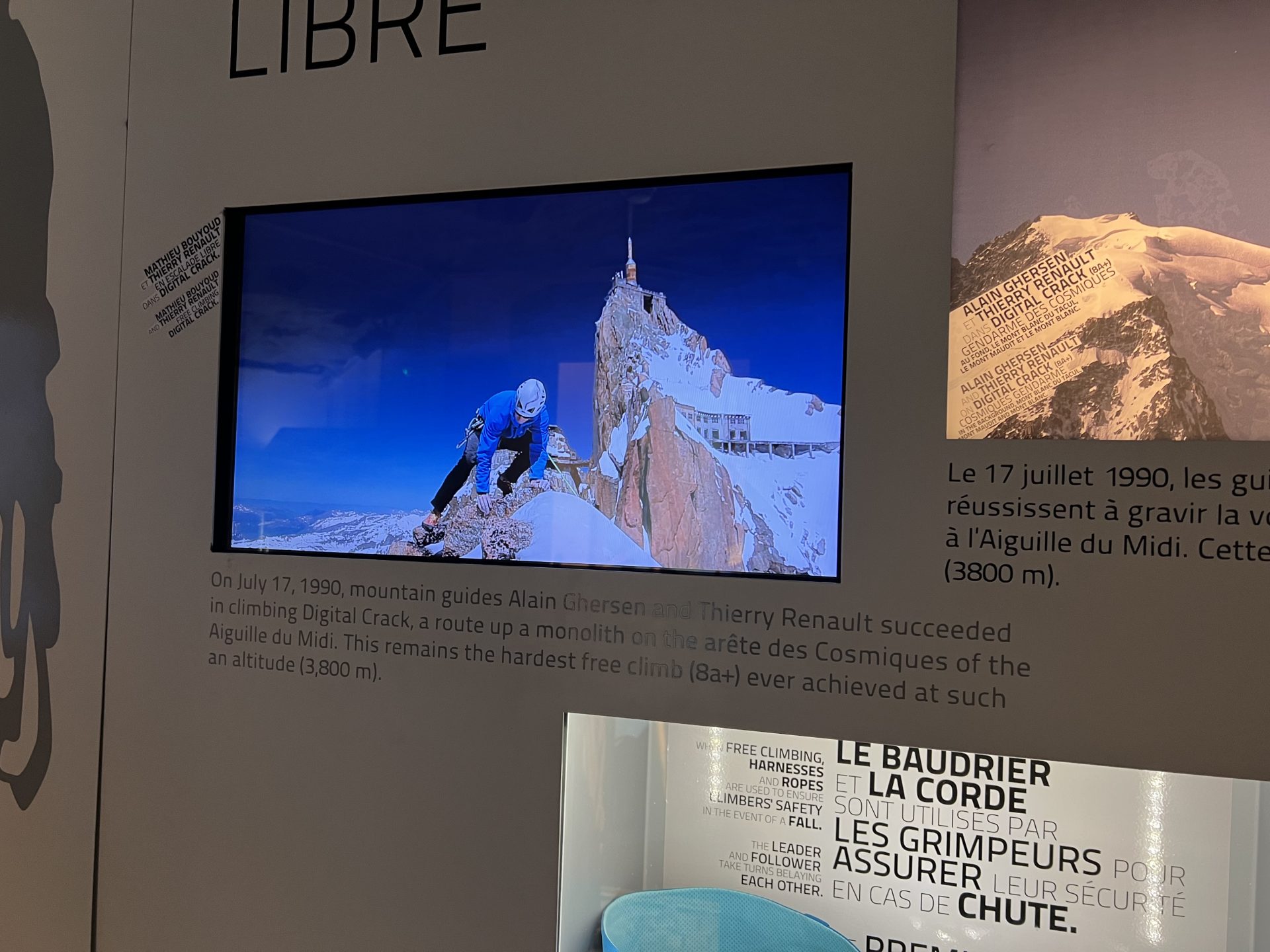
Taking the Aiguille up 2,800 meters (9,186 feet) is impressive. The views are incredible and you question why anyone would build a tram station on a rock looking so fragile.
We had our avy bags, and slipped on harnesses to rope together and walk down the infamous ridge line from the Aiguille. Some local people were doing it without harnesses, but I would suggest roping together with other people. Any fall would be fatal.
There is usually a rope set along the ridge you can hold onto, but sometimes it can get quite sketchy.

The zone at the bottom was full of endless touring areas. Snow blanketed the glacier spanning from France to the top of Courmayeur, Italy.
It was necessary to wear a harness while skiing. I noticed not just us with a guide but every local person had one on. The reason for this is crevasse rescue. It’s not common to fall in one but without a harness getting out would be difficult and potentially fatal.
Following the guide was necessary. Crevasses are hidden everywhere and snow generally fills them well. But sometimes it can create a trapdoor.
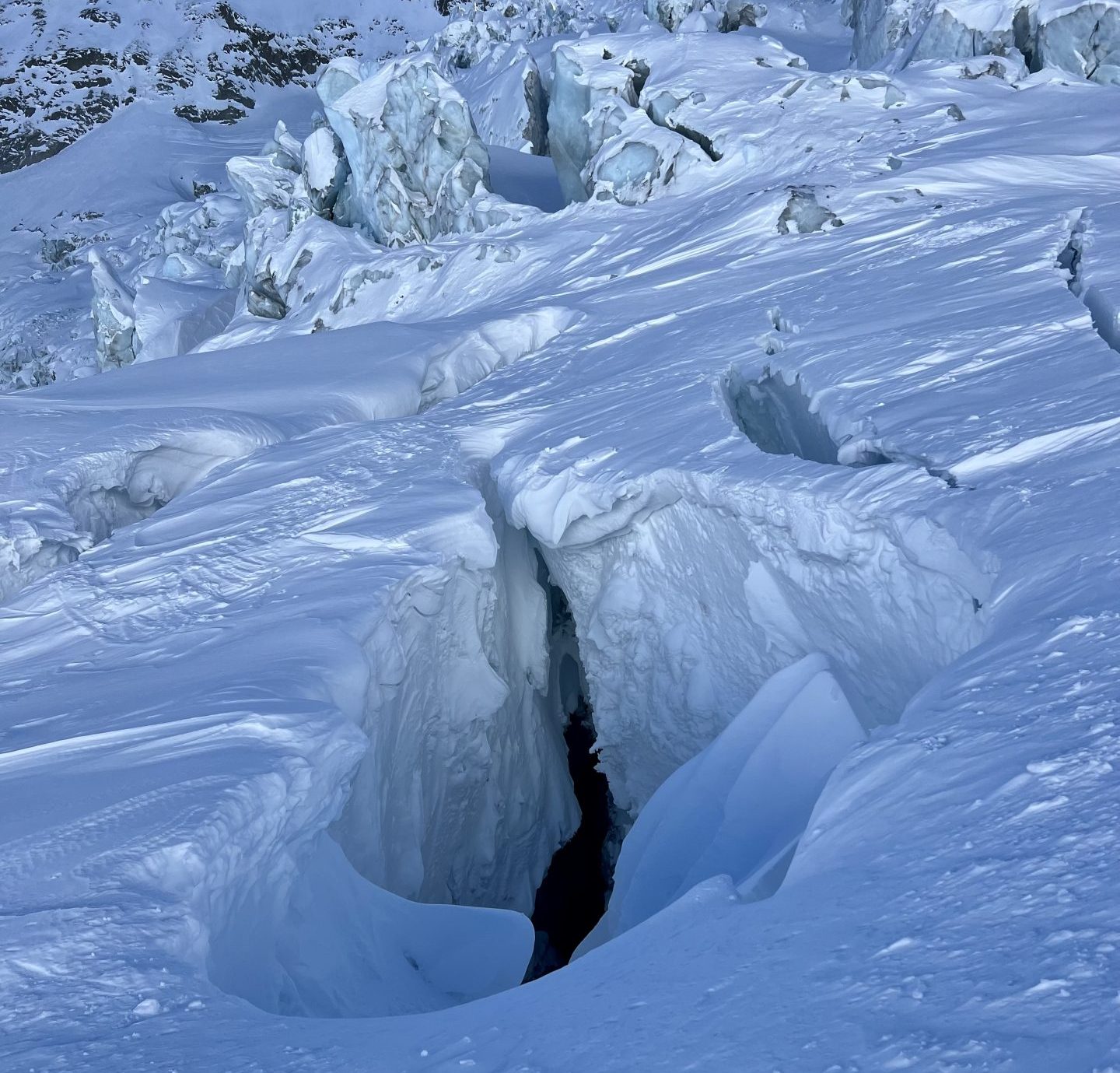
I even took a turn and realized I had almost stopped on top of a small 6 inches-wide crevasse. Who knows if it was 2 foot deep or 200 foot?
The views were incredible. The tops of pointy aiguilles in the backdrop of large seracs. La mer de glace was especially stunning.
The fresh snow had baked in the sun for a day which made it hard but not crusty. I would describe it as spongey which gave it a bit of a recoil between turns. Fun snow to ski as you could bounce around easily.
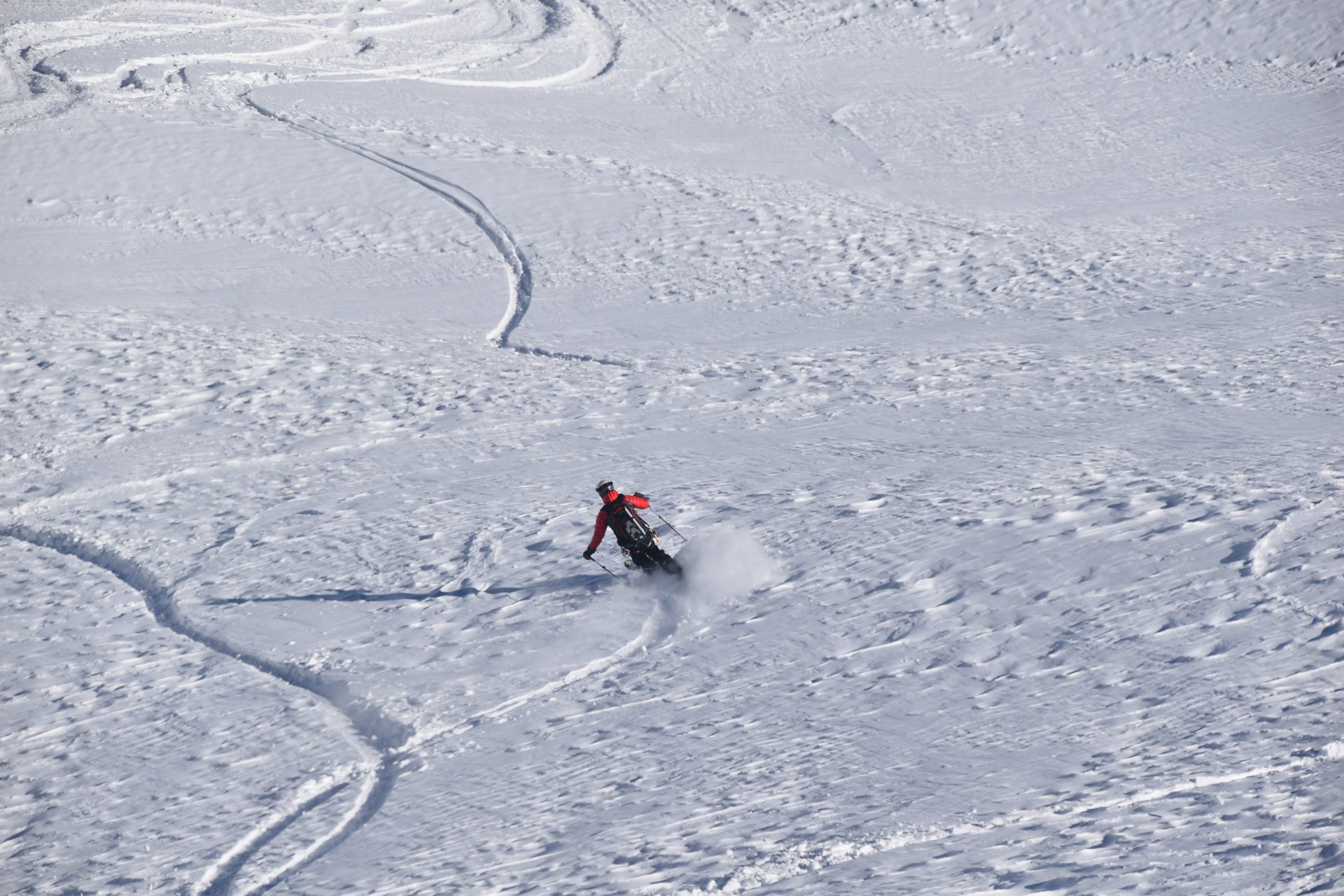
We stopped for lunch about halfway down and took in the views.
We continued along nice mellow flat areas under the walls of ice.
Since there was not enough snow to ski back to Chamonix, it was necessary to get to the train de Montenvers.
There was originally a gondola down to the glacier, but it is melting extremely fast. Every year scaffolding has been used to create a path to the gondola that was once at glacier level. Today, it requires over 600 steps to reach the gondola base station. Every two years they mark where the glacier was. Even in 2018 the glacier was at least 60 feet higher than today.
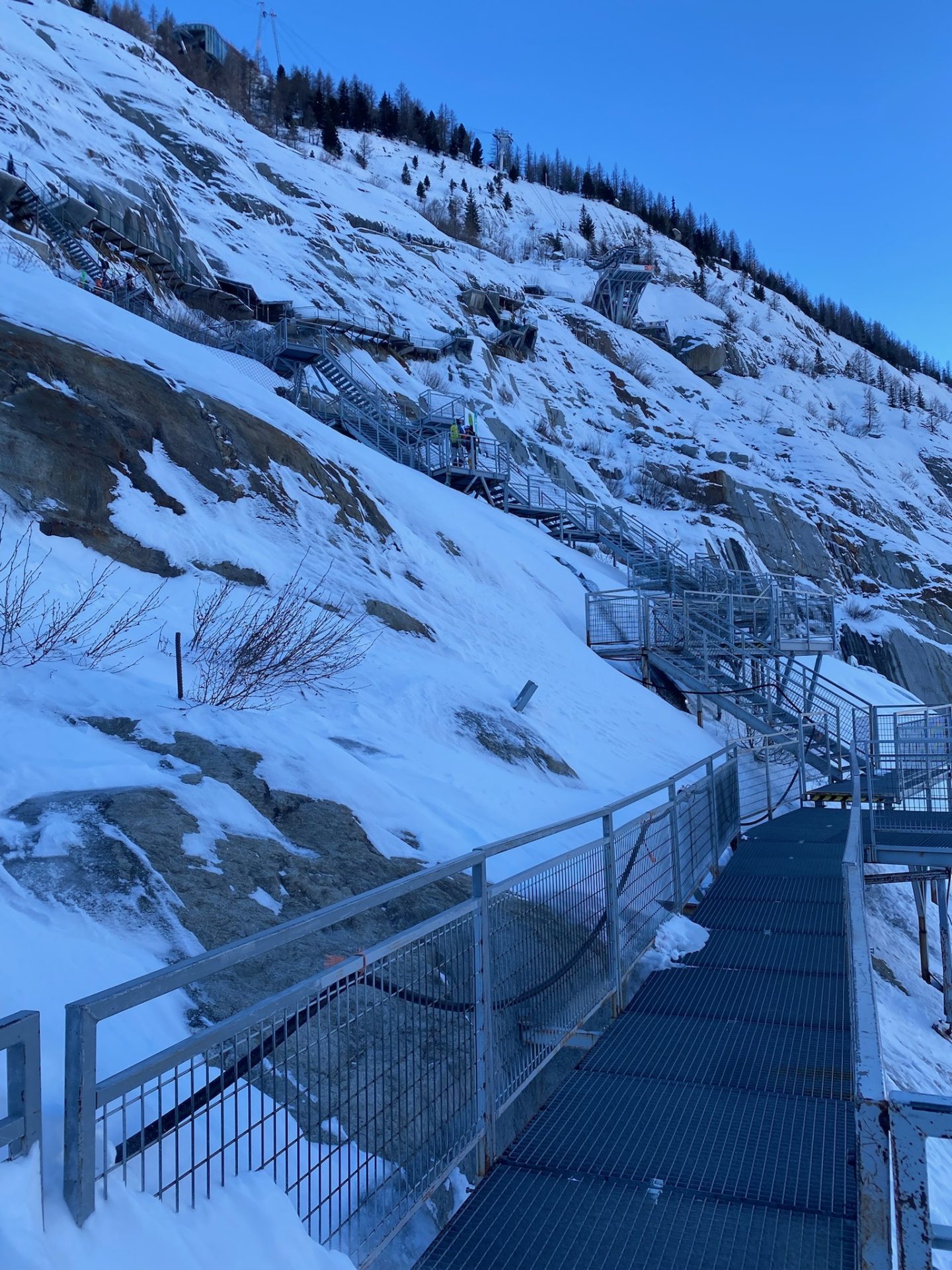
I asked Thierry where the glacier had been when he arrived in Chamonix over 44 years ago. He pointed straight up the valley wall. It has receded over 350 vertical feet since 1990 alone.
Today it has receded almost into the valley floor. A new gondola going lower into the valley up to the Montenvers station is being built.
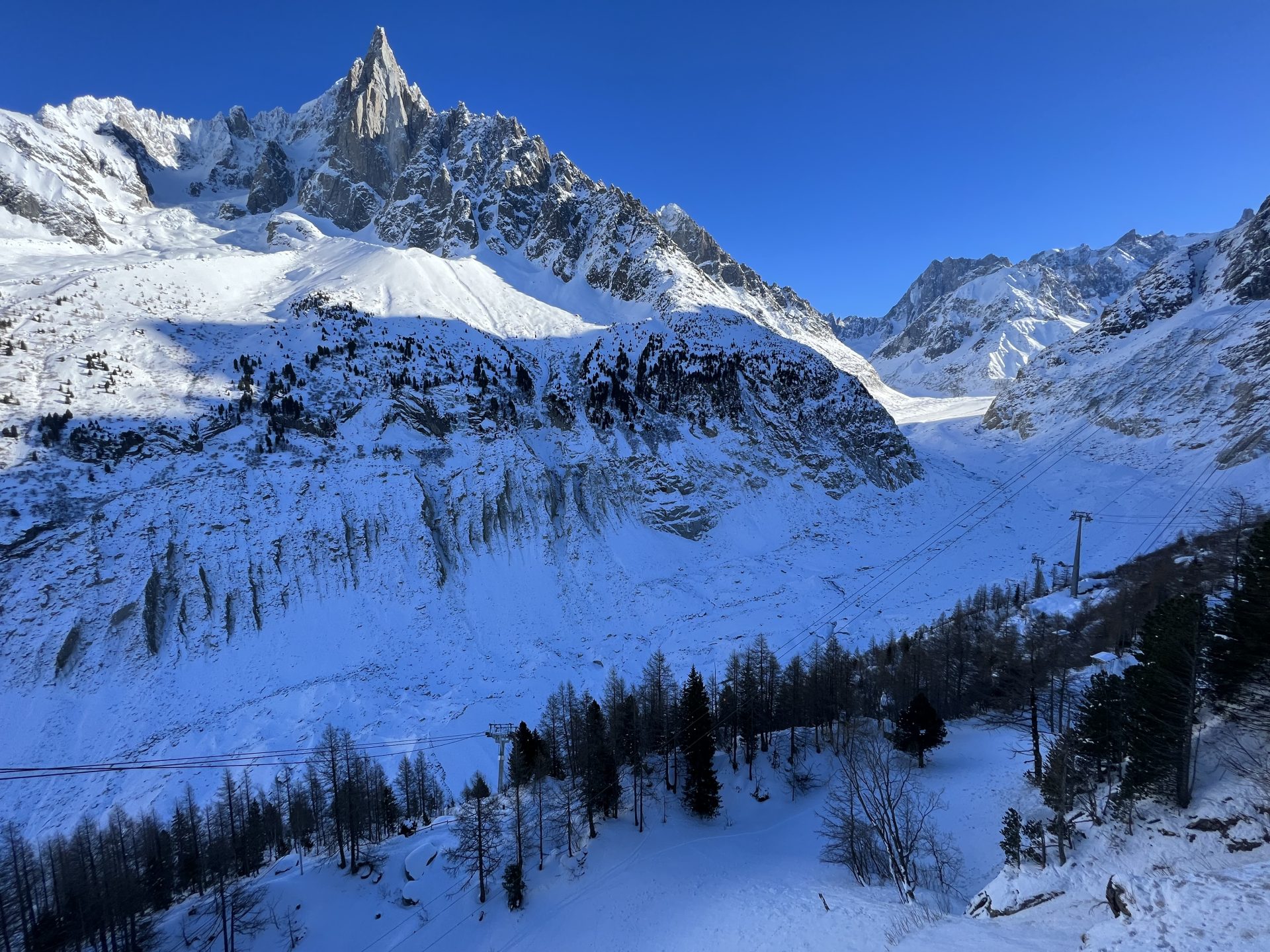
This will not be complete for another few months so the hike up from the valley floor took a strenuous hour in ski boots.
We were then able to take the train back to the town of Chamonix. Finished staring back up at the Aiguille du Midi where we started and excited to have finally skied La Vallée Blanche.
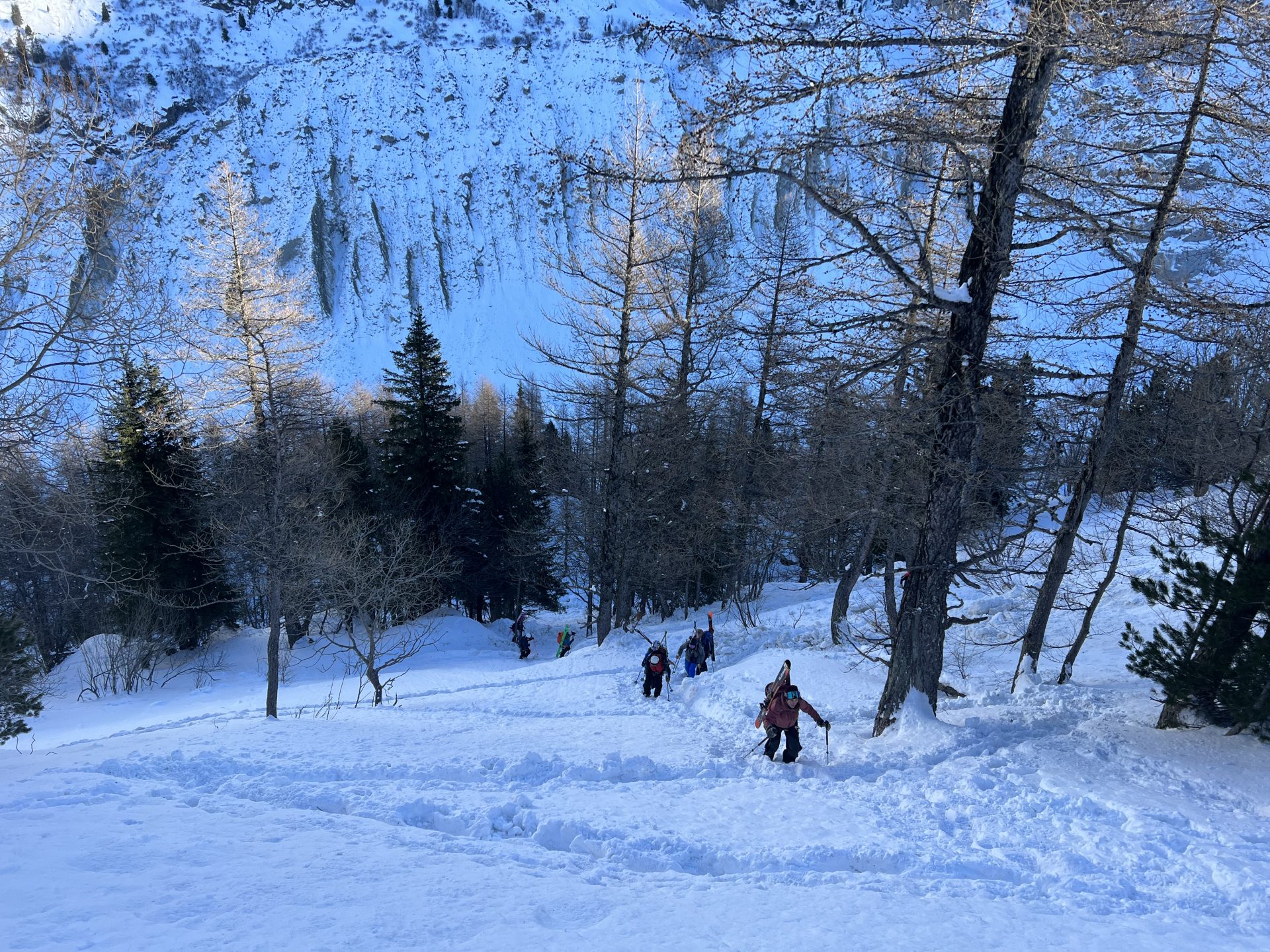
Photos
